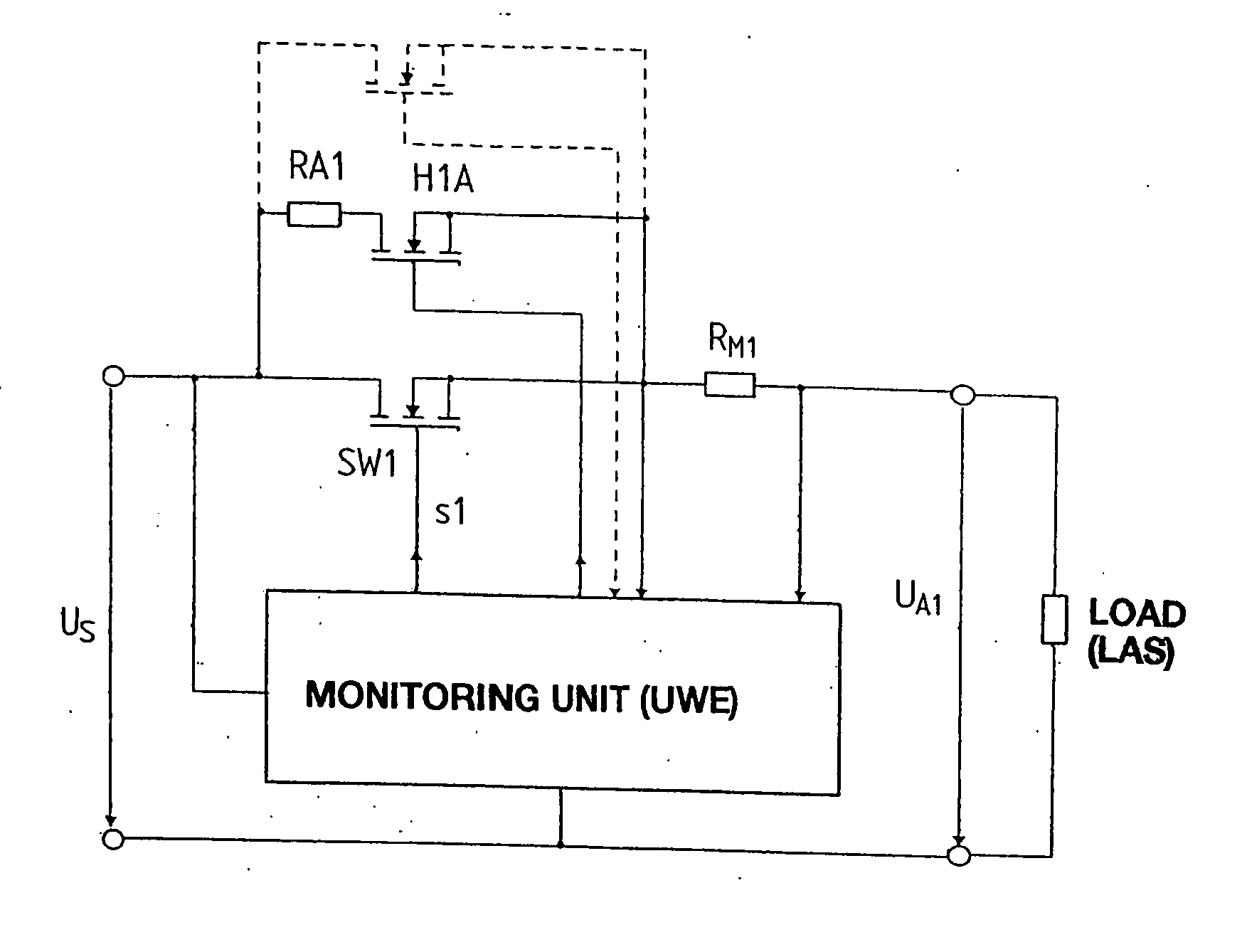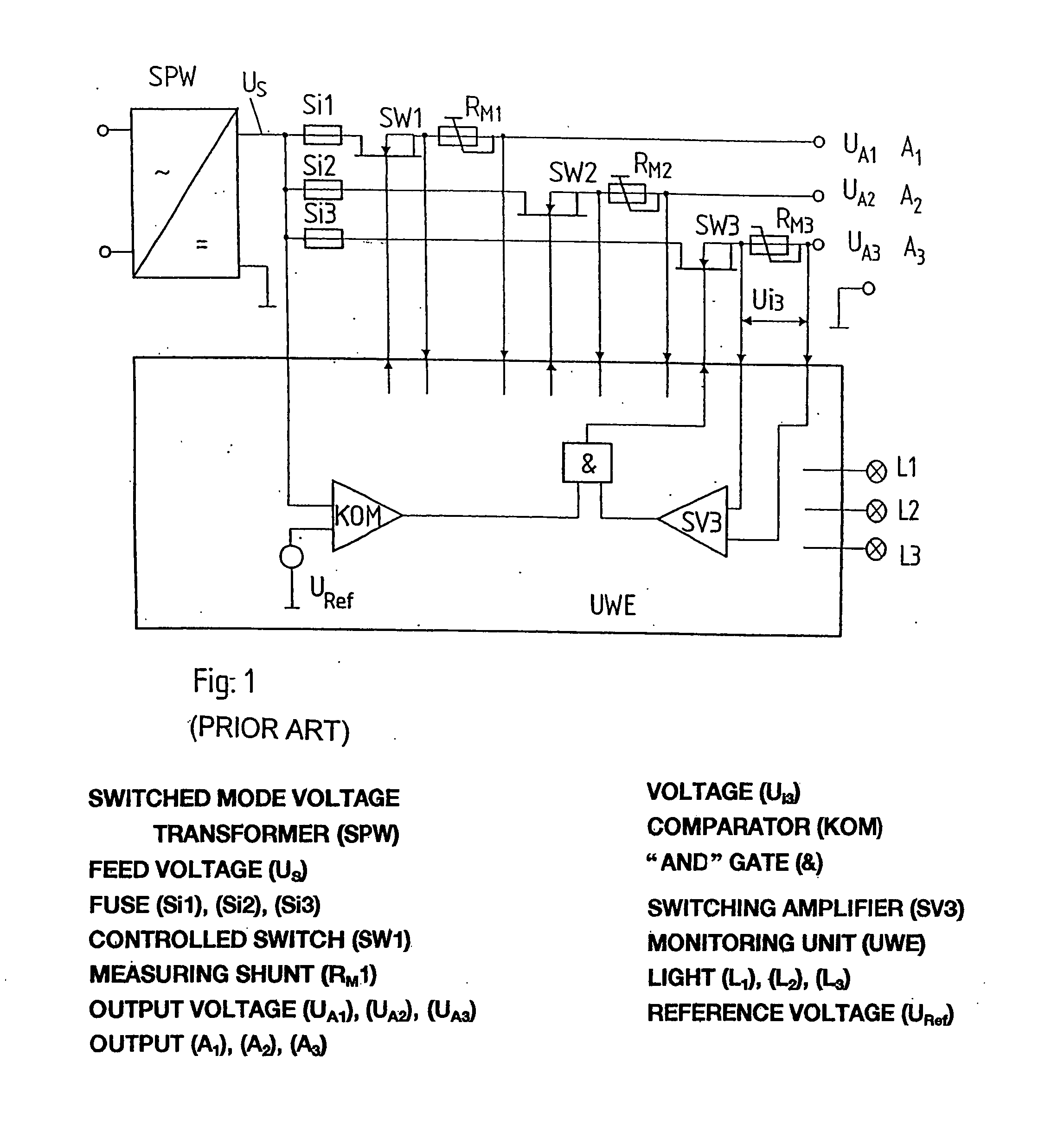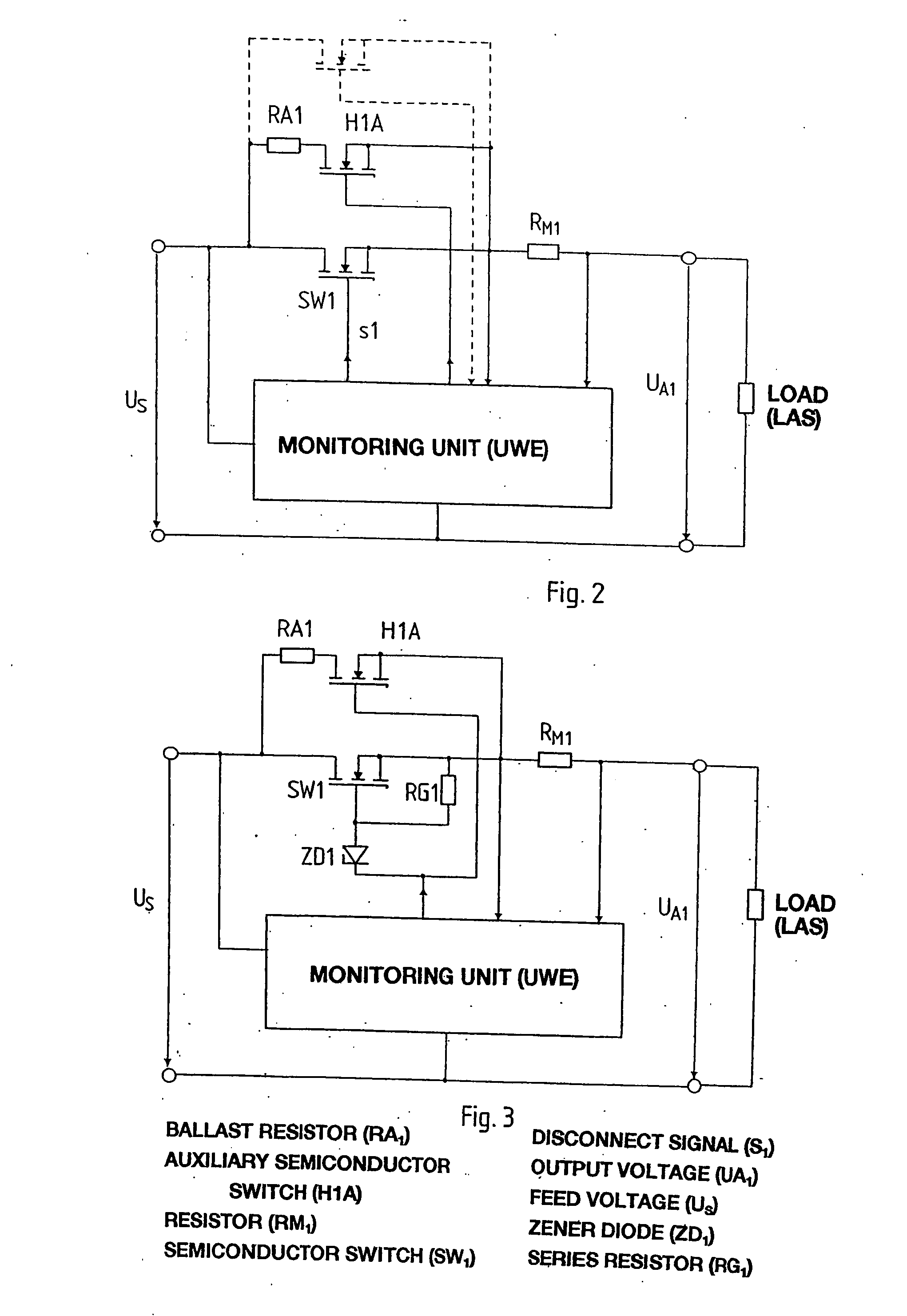Power supply with disconnect fuse
a power supply and fuse technology, applied in the field of power supply, can solve the problems of total feed voltage burst, inability to disconnect the conventional fuses for the individual outputs, and loss of data in the central control unit supplied by the feed voltage, etc., to achieve expedient and economical triggering, reduce power dissipation, and simplify the effect of monitoring unit triggering
- Summary
- Abstract
- Description
- Claims
- Application Information
AI Technical Summary
Benefits of technology
Problems solved by technology
Method used
Image
Examples
Embodiment Construction
[0024] According to FIG. 2, which concerns only one branch of a circuit according to FIG. 1, load LAS is connected across a semiconductor switch SW1, in this case a self-locking n-channel IGFET, to feed voltage Us. As already explained with respect to FIG. 1, a monitoring unit UWE, by corresponding signal to the gate of switch SW1, provides for the opening of the latter if, for example, the current measured using resistor RM1 exceeds a pre-defined maximum value. Variants of the disconnection conditions are possible, for example, a disconnection as a function of the output voltage or input voltage and combinations of such disconnection conditions.
[0025] The basic function of such an electronic fuse is to prevent a current of any given size from being able to flow through a branch. In reality, this is the typical function of a circuit breaker, with the additional characteristic that an operating state of the current limitation is still picked up before complete interruption of the cu...
PUM
 Login to View More
Login to View More Abstract
Description
Claims
Application Information
 Login to View More
Login to View More - R&D
- Intellectual Property
- Life Sciences
- Materials
- Tech Scout
- Unparalleled Data Quality
- Higher Quality Content
- 60% Fewer Hallucinations
Browse by: Latest US Patents, China's latest patents, Technical Efficacy Thesaurus, Application Domain, Technology Topic, Popular Technical Reports.
© 2025 PatSnap. All rights reserved.Legal|Privacy policy|Modern Slavery Act Transparency Statement|Sitemap|About US| Contact US: help@patsnap.com



